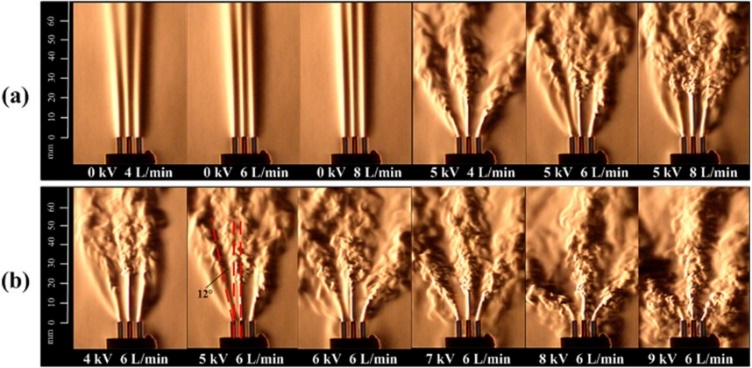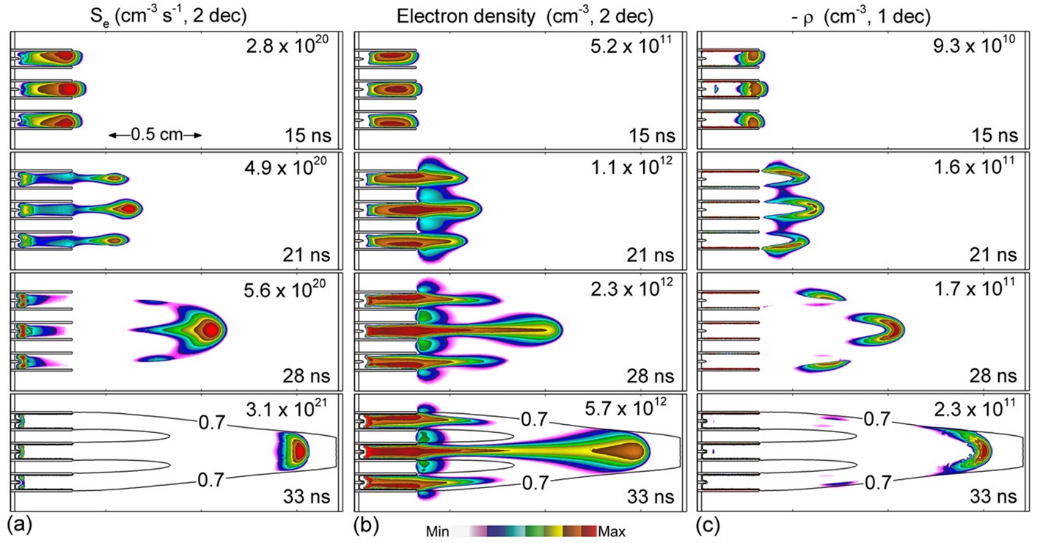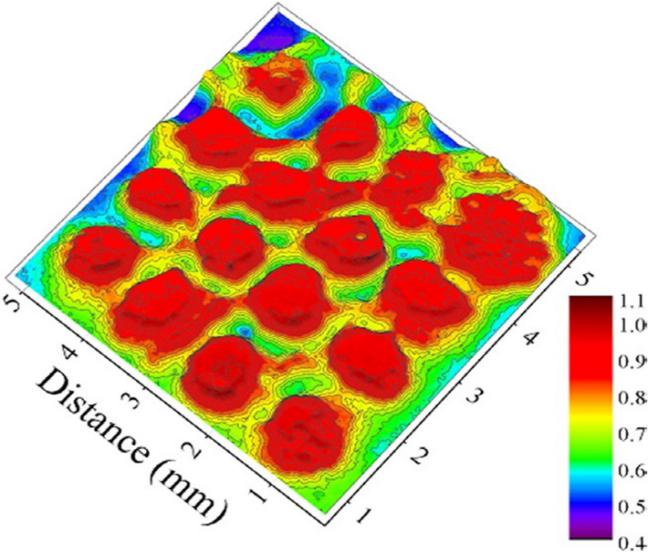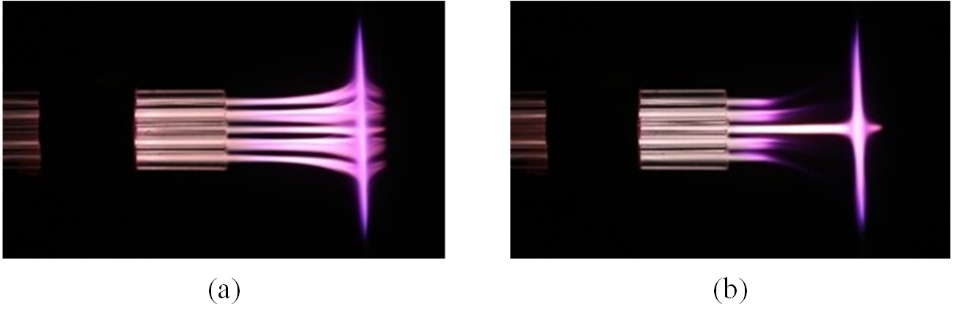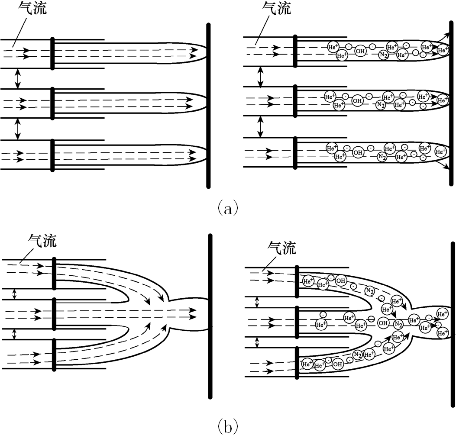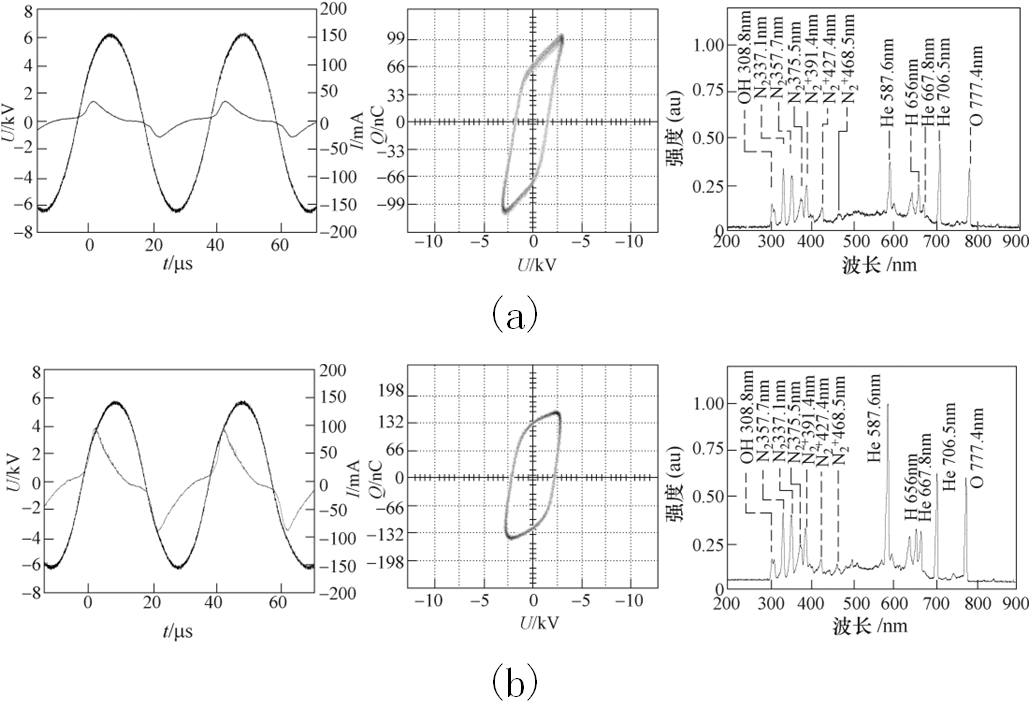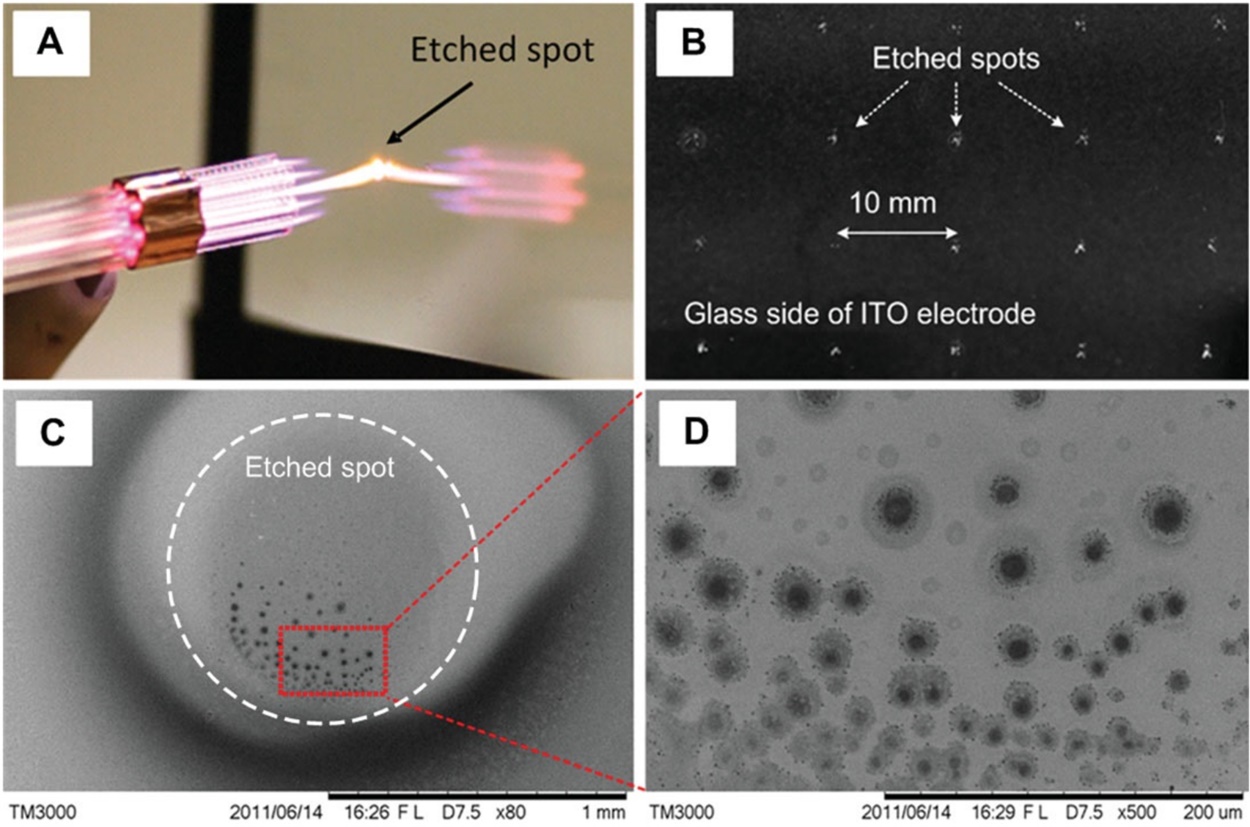不同模式二维等离子体射流阵列转换规律及放电特性研究毕业论文
2020-07-09 08:07
摘 要
大气压等离子射流是一种新兴的等离子体放电技术,具有很强的灵活性以及实际应用价值。通过将多个射流单元阵列化扩大了射流的处理面积,获得了大面积的射流等离子体;同时研究还发现射流阵列存在强耦合放电模式,为获得高强度等离子体提供了渠道。然而目前对大气压二维等离子体射流阵列放电模式的转换规律及放电特性的报道不多,需要进一步实验充实。
本文首先建立了二维射流阵列发生装置并实现了强耦合和均匀两种放电模式,并且用分别供气的方式代替了统一供气的方式,进而研究了边缘管气体流速、中间管气体流速、外加电压幅值、放电频率、射流阵列管间距等对二维等离子体射流阵列放电模式的转换的影响,通过对电场的仿真和流畅的观测进一步并对不同模式转换的机制进行了探索。
研究结果表明:周围管的气体流速会影响放电模式的转换。中间管气体流速、电压幅值、放电频率、射流阵列管间距等不会对二维等离子体射流阵列放电模式的转换产生影响,但是会影响射流阵列是否进入强耦合模式以及射流阵列的放电强度、放电的稳定性和均匀性等。放电模式的形成和转换与电场和流场的分布有关,当边缘管流速较低时,电场分布起到了主要的作用,射流阵列形成强耦合模式;当边缘管流速较大时,流场分布作用加强,发挥主要作用,射流阵列逐渐从强耦合模式转换为均匀模式。
关键词:二维等离子体射流阵列 放电模式 放电特性 电场分布 流场分布 模式转换
Study on Array Transformation and Discharge Characteristics of Different Mode Two-Dimensional Plasma Jets
Abstract
Atmospheric pressure plasma jet is a new type of plasma discharge technology, which has strong flexibility and practical application value. A large area of jet plasma was obtained by arraying a plurality of jet units to enlarge the jet processing area. At the same time, it was found that the jet array has a strong coupling discharge mode, providing a channel for obtaining high-intensity plasma. However, there are few reports on the transition laws and discharge characteristics of atmospheric pressure two-dimensional plasma jet array discharge patterns, and further experiments are needed to enrich them.
Firstly, this paper establishes a two-dimensional jet array generation device and realizes two types of discharge modes: strong coupling and uniform discharge, and replaces the unified gas supply mode with separate gas supply, and then studies the gas velocity of the edge tube, the gas velocity of the middle tube, The effects of applied voltage amplitude, discharge frequency, and jet array tube spacing on the conversion of two-dimensional plasma jet array discharge patterns are further explored through the simulation and smooth observation of the electric field and the mechanisms of different mode conversions.
The results show that the surrounding tube gas velocity will affect the conversion of the 2D plasma jet array discharge pattern. With the increase of the surrounding tube gas velocity, the 2D plasma jet array gradually transitions from the strong coupling mode to the uniform mode. The middle tube gas flow rate, voltage amplitude, discharge frequency, jet array tube spacing, etc. will not affect the conversion of the two-dimensional plasma jet array discharge mode, but it will affect whether the jet array enters the strong coupling mode and the discharge intensity of the jet array, Discharge stability and uniformity. The formation and conversion of discharge patterns are related to the distribution of electric and flow fields. When the velocity of the edge tube is low, the electric field distribution plays a major role. The jet array forms a strong coupling mode; when the edge tube flow rate is large, the flow field distribution effect To strengthen and play a major role, the jet array gradually shifts from a strong coupling mode to a uniform mode.
Key words: two-dimensional plasma jet array, discharge mode, discharge characteristics, electric field distribution, flow field distribution, mode conversion
目 录
摘要 I
Abstract II
第一章 引言 1
1.1 低温等离子体及其产生方式 1
1.2 等离子体射流阵列 2
1.2.1 射流单元间的相互作用 2
1.2.2 二维等离子体射流阵列不同的放电模式 4
1.3 国内外研究状况分析 6
1.4 本文主要研究内容 10
第二章 射流阵列实验平台和诊断方法 12
2.1 射流阵列实验平台搭建 12
2.1.1 射流阵列反应器结构 12
2.1.2 射流阵列供气方案 13
2.1.3 射流阵列测量诊断系统设计 17
2.2 射流阵列放电特性诊断方法 19
2.2.1 电气特性诊断方法 19
2.2.2 光学特性诊断方法 21
2.3 本章小结 22
第三章 射流阵列的放电模式及放电特性 24
3.1 两种放电模式 24
3.2 射流阵列两种放电模式下的电气特性 25
3.3 射流阵列的两种放电模式下的光学特性 26
3.4 本章小结 27
第四章 射流阵列的模式转换规律 28
4.1 气体流速的影响 28
4.1.1 统一供气方式 28
4.1.2 独立供气方式 29
4.2 电压幅值的影响 31
4.3 气流方向的影响 32
4.4 放电频率的影响 33
4.5 管间距的影响 34
4.6 本章小结 35
第五章 模式转换机制的探索 36
5.1 关于电场分布对模式转换机制的影响的探索 36
5.1.1 对环板电极的单管放电以及阵列放电的仿真 36
5.1.2 电场畸变的原因 37
5.1.3 环板电极放电与环环电极放电的对比 38
5.2 关于流场分布对模式转换机制的影响的探索 41
5.3 本章小结 43
第六章 结论 44
参考文献 45
致谢 48
第一章 引言
1.1 低温等离子体及其产生方式
等离子体(Plasma)在宇宙中广泛存在,呈电中性,它含有大量的活性基团、自由基以及激发态的原子、分子、电子、正负离子等,同时还伴有由于高能粒子的非弹性碰撞或复合而产生的大量光子和活性分子。随着外部能量的注入,物质会从固态、液态、气态转变为等离子态,因此等离子体又被称为“物质的第四态”。它与气体有许多相似的地方,没有固定的形状和体积,有流动性,所以也被叫做“超气态”。等离子体分为完全平衡(高温)、局部平衡、非平衡(低温)等离子体。其中,低温等离子体的电子容易获较高能量,更容易发生电离。
目前产生低温等离子体,普遍采用气体放电,通过外加高压,在电极之间产生足够高的电场,使间隙中的气体直接电离,产生低温等离子体。如图1-1中(a)-(f)所示,气体放电产生低温等离子体的方式有电晕、电弧、辉光、火花、介质阻挡 (DBD)、大气压等离子体射流(APPJ)等气体放电形式。
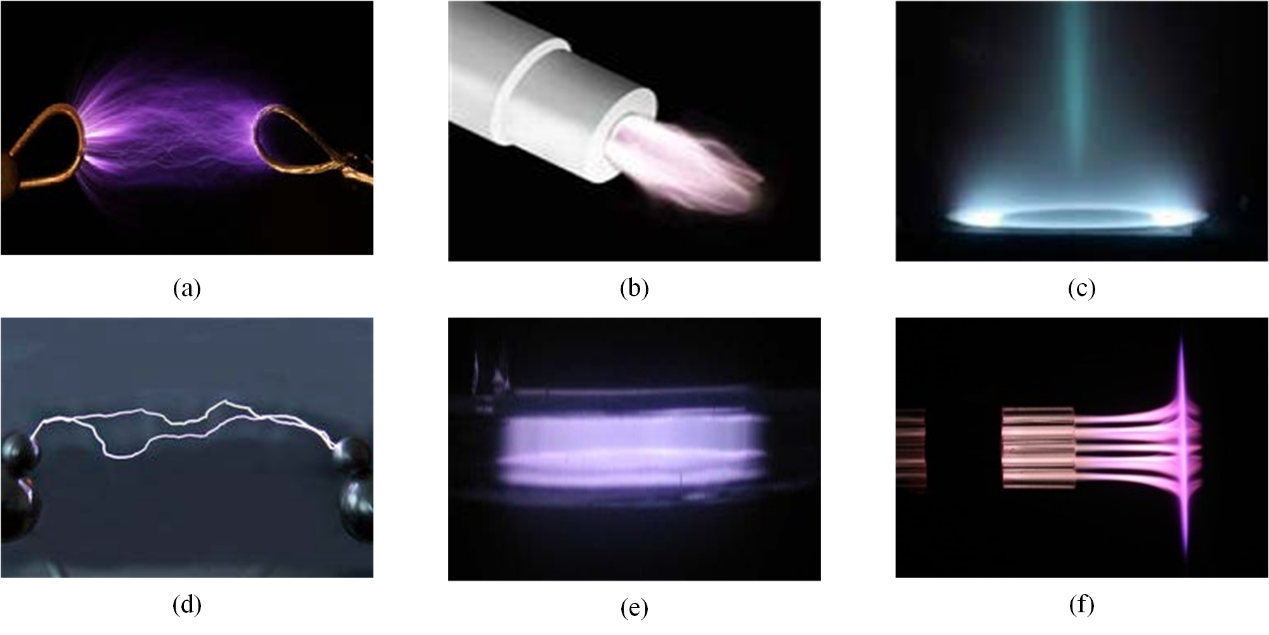
相关图片展示:
